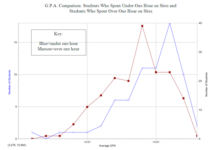According to the Entertainment Software Rating Board (ESRB), 67% of all American households play video games of some sort and 25% of them are younger than 18 years old. Conrad Green, Donovan Minor, and Braulio Campana, all gamers that go to the Denver School of Science and Technology, stated they have played, “collectively…since Monday, [so in two days]…40,” hours of videogames. Not long after, they admitted that this number was most likely a gross underestimate. What effect is this having on them, and if they represent the norm, what could the impacts of such practices be on our society?
The American Association of Pediatrics (AAP) suggests that a maximum limit of two hours be placed on all screen time activity for children of any age, but that children under age 2 not be exposed to these forms of entertainment at all.
However, Minor says he plays, “generally from the time I get out of school, from the time I get home…so about…30 plus hours [every week].” This number represents 2 to 3 times the AAP’s maximum weekly screen time solely in videogames. The ESRB also states that the average gamer plays 8 hours a videogames a week, a statistic that doesn’t account for any added screen time from other sources
On the other hand, Dr. Simone Kühn, a Senior Research at the Center for Lifespan Psychology at the Max-Plank Institute for Human Development in Germany, and his group reported in a paper in 2014 that they had found that video games increase the levels of gray matter in areas of the brain associated with motor skills, planning, spatial navigation, and working memory, all of which are basic and necessary mental functions.
Dr. Anne Stratton, a pediatrician of physical medicine and rehabilitation in Denver, said that, “People are trying to come out with more education videogames that might promote things like problem solving, like Minecraft…I think that there is a valid place for the use of some videogames to help promote creativity and problem solving…but it still requires moderation.”
Dr. Linda Jackson, a Professor in the Department of Psychology at Michigan State University, and her group found that, “correlations between videogame playing and every measure of creativity were significant and positive.” The study was conducted on nearly 500 children in 2011; the test Jackson and her colleagues used to measure creativity was The Torrance Test of Creativity, which was released in 1987 and is considered one of the more reliable measures for creativity in children.
There are others, however, that worry about the amount of violence in videogames. The ESRB also states that 17% of all released games are listed with a rating of Mature. Since the Columbine school shooting in 1999, many sources have been speculating of both this shooting and many after that the motivation behind them is rooted in the violence of such videogames.
Dr. Michele Ybarra, President and Research Director at Internet Solutions for Kids, a non-profit institution that focuses on the impacts of new technologies on adolescents, found in her research with several others that adolescents that had played violent videogames in the past six months were four times more likely to carry a gun to school. This study was published January of 2014 and took into account nearly 3400 students.
Green said that he plays violent videogames, “just for general release…I became very angry for years on end, so I found videogames as an outlet for it, and now I just play it for relaxation purposes.” And according to both Green and Minor, “all we play together is [Grand Theft Auto],” a game known for both its violence and its explicit material.
There are other problems that have been linked with videogames. Stratton stated that, “Some studies that have come out that show a significant link between attentional problems and screen time and that includes television and videogames…that earlier videogame exposure…compared to adult exposure…really increasing that difficulty for paying attention.”
“It’s hard to know the applicability [of videogames] to the outside world, and that’s where you don’t want to fully immerse yourself,” said Stratton, “you want to balance that virtual world with the real world experience.”
Thomas Norton

This work is licensed under a Creative Commons Attribution-NonCommercial-NoDerivs 3.0 Unported License















